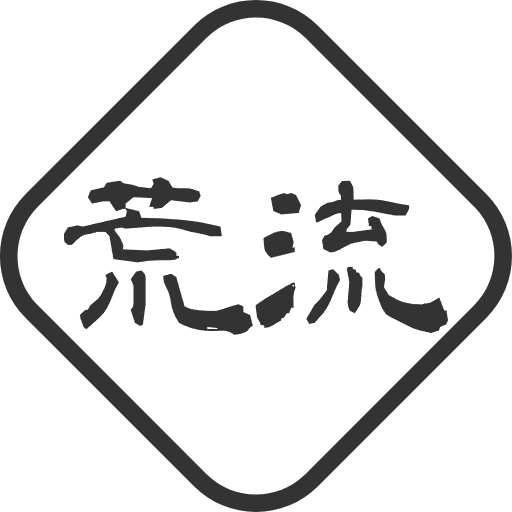Python自动化操作GUI
Python 实现对 windows 鼠标和键盘的接管,自动化 GUI 操作。
1. PyAutoGUI 简介
详细教程推荐查看文档:Welcome to PyAutoGUI’s documentation! — PyAutoGUI documentation 。
PyAutoGUI 接管了鼠标、键盘使用权,基本上完全仿照人的操作,底层不必套牢在 Windows 系统,因而是跨平台的。这类 GUI 自动化工具的初衷是给 GUI 程序自动化测试用,产生点击鼠标、敲击键盘的行为,在日志中记录下消息事件和 GUI 程序的响应结果,事后分析 GUI 程序可能存在的 bug。不过,既然能产生点击鼠标、敲击键盘的行为,我们就可以用来控制 GUI 程序批量完成文件编辑、保存工作。
按照官方的说法,PyAutoGUI给人类用的 GUI 自动化神器,简单高效、函数分类清晰,它被awesome-python、awesome-python-cn收录。
安装 PyAutoGUI:py -m pip install pyautogui。
2. 保护措施
Python 移动鼠标、点击键盘非常快,有可能导致其他应用出现问题。在这种情况下,程序可能会失控(即使是按照你的意思执行的),那时就需要中断。如果鼠标还在自动操作,就很难在程序窗口关闭它。
为了能够及时中断,PyAutoGUI 提供了一个保护措施:当pyautogui.FAILSAFE = True时,如果把鼠标光标在屏幕左上角,PyAutoGUI 函数就会产生pyautogui.FailSafeException异常,因此如果你的程序失控了导致需要中断 PyAutoGUI 函数,就把鼠标光标在屏幕左上角。
要禁用这个特性,就把FAILSAFE设置成False:
import pyautogui
pyautogui.FAILSAFE = False通过把pyautogui.PAUSE设置成float或int时间(秒),可以为所有的 PyAutoGUI 函数增加延迟。默认延迟时间是 0.1 秒。在函数循环执行的时候,这样做可以让 PyAutoGUI 运行的慢一点,非常有用。例如:
import pyautogui
pyautogui.PAUSE = 2.5
pyautogui.moveTo(100,100)
pyautogui.click()所有的 PyAutoGUI 函数在延迟完成前都处于阻塞状态(blocked),PyAutoGUI 未来计划增加一个可选的非阻塞模式来调用函数。
通常建议PAUSE和FAILSAFE一起使用。
3. 鼠标操作
获取鼠标当前位置:
In [3]: pyautogui.position() # 获取鼠标当前位置 Out[3]: Point(x=846, y=437)移动
pyautogui.moveTo(x,y[,duration = t]):鼠标移动到指定位置,duration指定移动的耗时,省略时表示立即移动pyautogui.moveRel(x,y[,duration = t]):鼠标相对于当前位置移动指定的偏移量
点击
# 按下鼠标按键(左键) pyautogui.mouseDown() # 释放鼠标按键(左键) pyautogui.mouseUp() # 向计算机发送虚拟的鼠标点击(click()函数只是前面两个函数调用的方便封装) # 默认在当前光标位置,使用鼠标左键点击,可选择在(x,y)处点击鼠标左键、右键、中键 pyautogui.click([x,y,button='left/right/middle']) # 单击鼠标右键 pyautogui.rightClick() # 单击鼠标中键 pyautogui.middleClick() # 双击鼠标左键 pyautogui.doubleClick()拖动:按住一个键不放,同时移动鼠标
# 将鼠标拖动到指定位置 pyautogui.dragTo(x,y[,duration=t]) # 将鼠标拖动到相对当前位置的位置 pyautogui.dragRel(x,y[,duration=t])滚动:模拟鼠标划轮控制窗口上下滚动(滚动发生在鼠标的当前位置),正数表示向上滚动,负数表示向下滚动
pyautogui.scroll()
4. 键盘操作
输入字符串:
pyautogui.typewrite(message, interval=0.0, logScreenshot=None, _pause=True)输入单个字符(不支持中文字符,因为函数无法知道输入法需要什么按键才能得到中文字符):
>>> pyautogui.typewrite('Hello world!', 0.25) >>> Hello world!输入特殊字符:
>>> pyautogui.typewrite(['enter', 'a', 'b', 'left', 'left', 'X', 'Y'], '0.25') >>> >>> XYabPyAutoGUI 键盘表:
字符串 键盘操作 ‘enter’(或‘return’ 或 ‘\n’) 回车 ‘esc’ ESC 键 ‘shiftleft’, ‘shiftright’ 左右 SHIFT 键 ‘altleft’, ‘altright’ 左右 ALT 键 ‘ctrlleft’, ‘ctrlright’ 左右 CTRL 键 ‘tab’ (‘\t’) TAB 键 ‘backspace’, ‘delete’ BACKSPACE 、DELETE 键 ‘pageup’, ‘pagedown’ PAGE UP 和 PAGE DOWN 键 ‘home’, ‘end’ HOME 和 END 键 ‘up’, ‘down’, ‘left’,‘right’ 箭头键 ‘f1’, ‘f2’, ‘f3’…. F1…….F12 键 ‘volumemute’, ‘volumedown’,‘volumeup’ 有些键盘没有 ‘pause’ PAUSE 键 ‘capslock’, ‘numlock’,‘scrolllock’ CAPS LOCK, NUM LOCK, 和 SCROLLLOCK 键 ‘insert’ INS 或 INSERT 键 ‘printscreen’ PRTSC 或 PRINT SCREEN 键 ‘winleft’, ‘winright’ Win 键 ‘command’ Mac OS X command 键
按键的按下和释放(和鼠标按键非常类似):
pyautogui.keyDown():按下某个键pyautogui.keyUp():松开某个键pyautogui.press():一次完整的击键,前面两个函数的组合。
直接使用快捷键函数
hotkey——接受多个键名参数,按传入顺序按下,再按照相反顺序释放:pyautogui.hotkey('altleft', 'f4')
5. 消息弹窗
PyAutoGUI 利用 pymsgbox 的功能,以 JavaScript 风格函数提供消息框功能,包括以下函数,它们连参数都是一致的,熟悉 JavaScript 的朋友不会陌生。
alert():提示框confirm():选择框prompt():普通输入password():密码输入
In [24]: pyautogui.alert(text='警告',title='PyAutoGUI消息框',button='OK')
Out[24]: 'OK' # 点击的按键被返回
In [28]: pyautogui.confirm(text='请选择',title='PyAutoGUI消息框',buttons=['1','2'
...: ,'3'])
Out[28]: '2' # 点击的按键被返回
In [30]: pyautogui.prompt(text='请输入',title='PyAutoGUI消息框',default='请输入')
Out[30]: 'input by 伪码人' # 点OK按钮后返回输入内容
In [32]: pyautogui.password(text='输入密码',title='PyAutoGUI消息框',default='',mask='*')
Out[32]: 'We_Coder' # 点OK按钮后返回输入内容6. 屏幕处理
有时我们需要监控屏幕上的内容,从而决定要不要进行对应的操作,pyautogui 提供了一些相关的方法。
获取屏幕尺寸:
In [2]: pyautogui.size() # 获取屏幕尺寸(分辨率×分辨率) Out[2]: Size(width=1920, height=1080)判断坐标是否在屏幕范围内:
In [4]: pyautogui.onScreen(100,200) # 判断坐标是否在屏幕范围内 Out[4]: True In [5]: pyautogui.onScreen(100,2000) # 判断坐标是否在屏幕范围内 Out[5]: False获取屏幕截图:
screenshot(),可以返回一个 Pillow 的Image对象。import pyautogui im = pyautogui.screenshot() # 获得某个坐标的像素 im.getpixel((50, 200)) # (30, 132, 153) # 判断屏幕坐标的像素是不是等于某个值 pyautogui.pixelMatchesColor(50, 200, (30, 132, 153)) # True图片匹配:在屏幕按像素匹配,定位图片在屏幕上的坐标位置
locateOnScreen(*args, **kwargs):返回Box对象,即左上角坐标、宽度、高度 4 个值组成的元组;若未找到返回None。In [30]: shot = pyautogui.screenshot(region=(0, 270, 170, 200)) In [31]: shot.show() In [32]: res = pyautogui.locateOnScreen(shot);res Out[32]: Box(left=0, top=270, width=170, height=200) In [33]: pyautogui.center(res) # 可用`center()`函数计算出中心坐标。 Out[33]: Point(x=85, y=370)locateCenterOnScreen:一步到位,返回中心坐标。locateAllOnScreen:找到所有匹配的位置。
7. 示例
import time
import sys
import os
import pyautogui
import keyboard
from tqdm import trange
def getMousePositon():
"""获取鼠标位置"""
time.sleep(5) # 准备时间
print("-------开始获取鼠标位置-------")
try:
for i in range(10):
# Get and print the mouse coordinates.
x, y = pyautogui.position()
positionStr = f"鼠标坐标点:(x, y)= ({str(x).rjust(4)}, {str(y).rjust(4)}), "
pix = pyautogui.screenshot().getpixel((x, y)) # 获取鼠标所在屏幕点的RGB颜色
positionStr += f"该位置的颜色:RGB = ({str(pix[0]).rjust(3)}, {str(pix[1]).rjust(3)}, {str(pix[2]).rjust(3)})"
print(positionStr)
time.sleep(0.5) # 停顿时间
except:
print('获取鼠标位置失败')
def task(times=1):
folder = "./steps"
if not os.path.isdir(folder):
os.mkdir(folder)
filenames = os.listdir(folder)
filenames.sort()
maxNum = int(filenames[-1][:-4]) if len(filenames) > 0 else 0
initPosition = (697, 1428)
x, y = initPosition
for i in trange(times):
pyautogui.moveTo(x, y)
pyautogui.click()
pyautogui.hotkey("alt", "enter")
pyautogui.screenshot(f"{folder}/{str(maxNum + i + 1).zfill(4)}.png",
region=(0, y - 250, 1000, 600))
pyautogui.press(keys=["up", "enter"])
# time.sleep(0.5) # 停顿时间
def callback(keyboardEvent):
if (keyboardEvent.event_type == "esc"):
print("-----------------------")
print(keyboardEvent)
# raise SystemError("主动终止程序!")
sys.exit()
if __name__ == "__main__":
keyboard.hook(callback)
# keyboard.wait()
# getMousePositon()
task(20)
更新日志
5be7e-于899db-于eedbf-于6bda4-于666db-于
